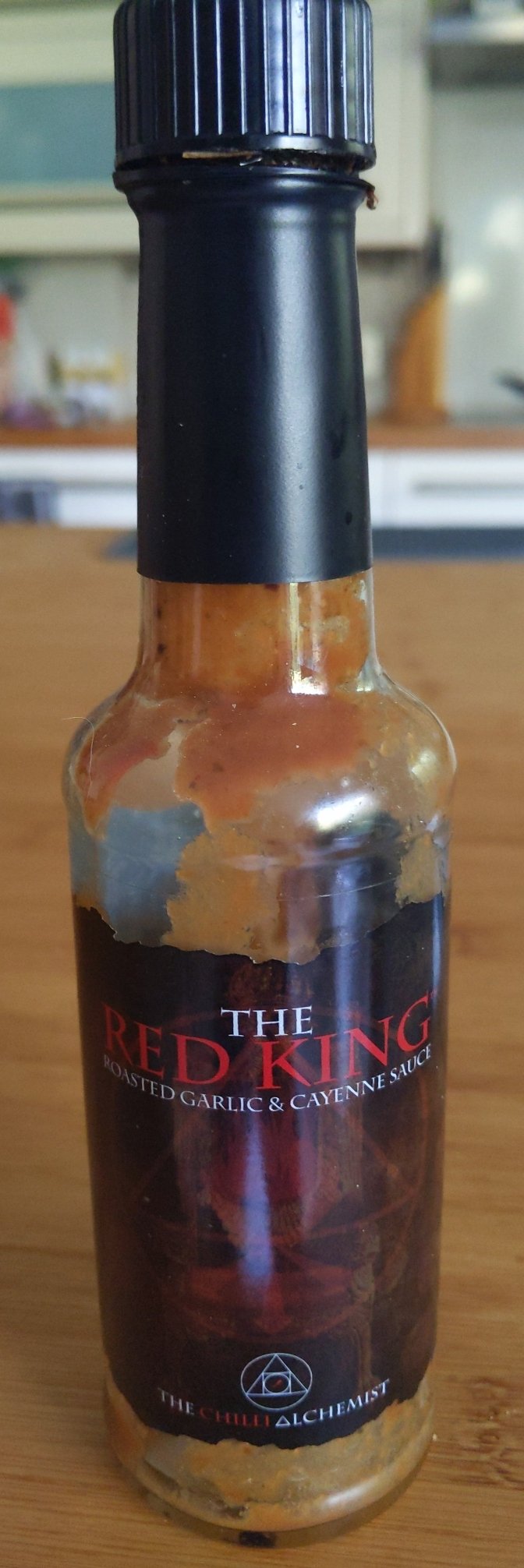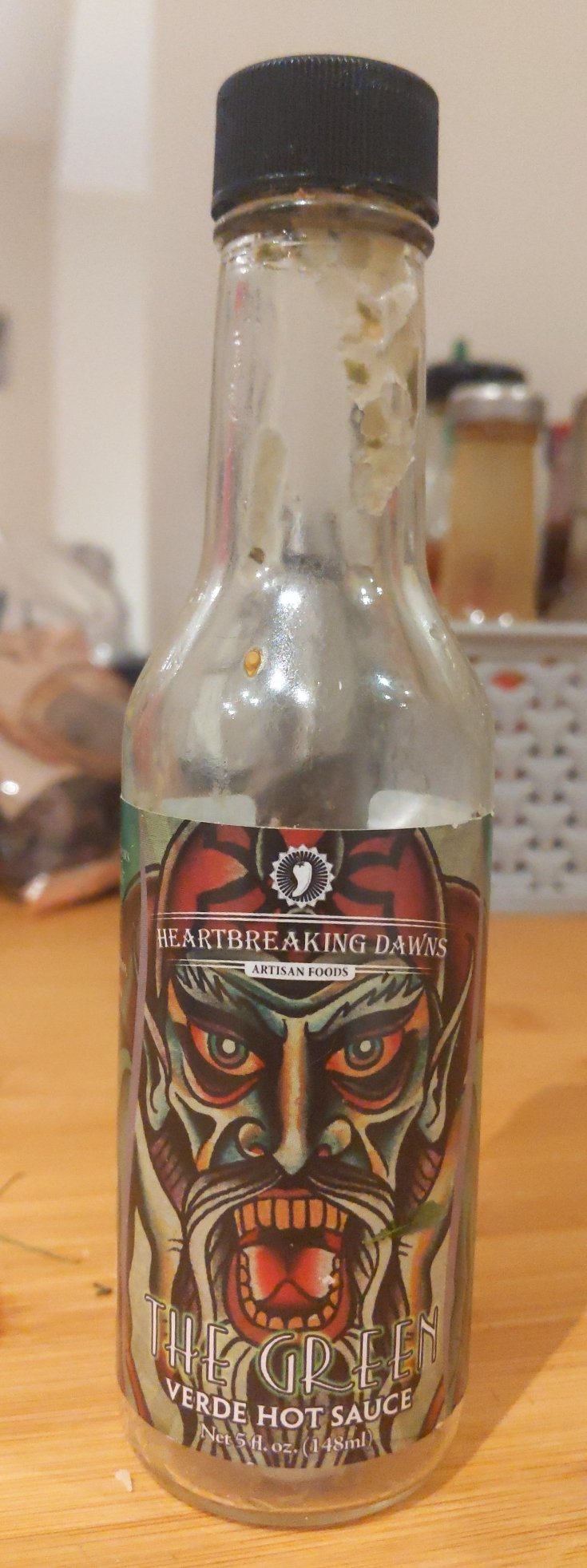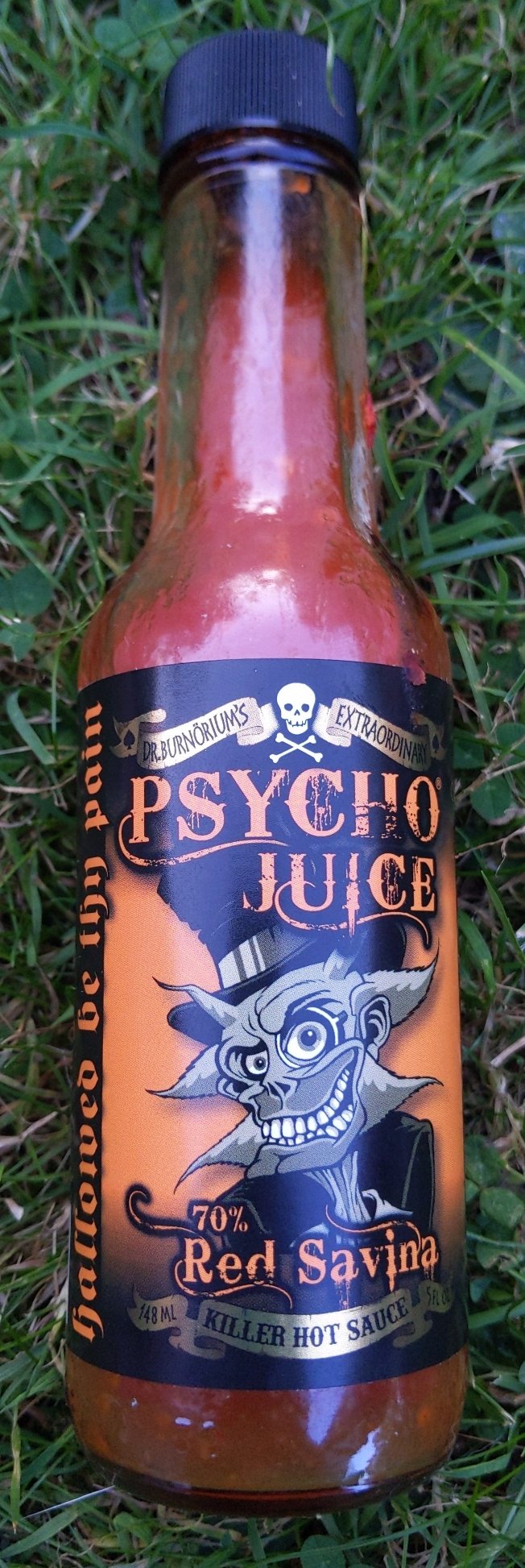This is my second sauce from Heartbreaking Dawn’s with a similarly pretty label.

Good sauce, on the runny side (not a bad thing, just an observation!). Second on the ingredients list is apricot preservatives and while I have to admit that I didn’t pick out the apricot, there is a very pleasant fruitiness which complements the scorpion, as you might expect. Blueberries are in there too, apparently… I’ll take their word for it!
It’s another sauce which is using a mash and I’m becoming increasingly fond of the flavour profile that results from the mashing process. It’s hot, but not outrageously so, so hits a sweet spot for me… Bottle lasted me about 14 days.
8/10 – Will likely order again









